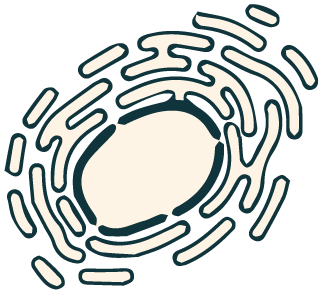This website uses cookies to ensure you get the best experience on our website.
- Table of Contents
Facts about Double-stranded RNA-specific editase 1.

Can edit both viral and cellular RNAs and can edit RNAs at multiple sites (hyper-editing) or at particular sites (site-specific editing). Its cellular RNA substrates include: bladder cancer- associated protein (BLCAP), neurotransmitter receptors for glutamate (GRIA2 and GRIK2) and serotonin (HTR2C), GABA receptor (GABRA3) and potassium voltage-gated channel (KCNA1).
| Human | |
|---|---|
| Gene Name: | ADARB1 |
| Uniprot: | P78563 |
| Entrez: | 104 |

| Belongs to: |
|---|
| No superfamily |

ADAR2a; ADAR2ADAR2g; ADAR2a-L1; ADAR2a-L2; ADAR2a-L3; ADAR2b; ADAR2c; adenosine deaminase, RNA-specific, B1; double-stranded RNA-specific editase 1; DRABA2; DRADA2hRED1; EC 3.5; human dsRNA adenosine deaminase DRADA2; human dsRNA adenosine deaminase DRADA2b, EC 3.510adenosine deaminase, RNA-specific, B1 (homolog of rat RED1); RED1 homolog; RED1ADAR2d; RNA editase; RNA editing deaminase 1; RNA-editing deaminase 1; RNA-editing enzyme 1; RNA-specific, B1 (RED1 homolog rat)
Mass (kDA):
80.763 kDA

| Human | |
|---|---|
| Location: | 21q22.3 |
| Sequence: | 21; NC_000021.9 (45074578..45226563) |
Highly expressed in brain and heart and at lower levels in placenta. Fair expression in lung, liver and kidney. Detected in brain, heart, kidney, lung and liver (at protein level). Isoform 5 is high expressed in hippocampus and colon. Isoform 5 is expressed in pediatric astrocytomas and the protein has a decreased RNA-editing activity. The decrease in RNA editing correlates with the grade of malignancy of the tumors, with the high grade tumors showing lower editing is seen.
Nucleus. Nucleus, nucleolus. Shuttles between nucleoli and the nucleoplasm.





Researchers need to know the ADARB1 marker when it comes DNA sequencing. This marker can be used to identify whether a particular enzyme or gene is present. ADARB1 is found in both bacterial as well as human cells, which is different from ADARB2. The ADARB1 mark is useful for many reasons. Researchers can use it to test a wide range of tissues for specific changes, including rDNA and DNA.
ADARB1 is a commonly detected protein in many biological assays. Many of these tests use antibodies to detect the protein. Monoclonal and polyclonal antibodies can be used to detect the protein. They have different specificities depending on the sample type. Boster Bio has used rabbit and mouse as the model species to develop its ADARB1 antibodies. This marker allows scientists to quickly identify a protein that causes a reaction in samples.
The ADAR1 antibody is an excellent choice for your research and laboratory. It is a monoclonal antibody which recognizes ADARB1 within many animal samples. Boster Bio has validated the antibody using several different methods, including Western Blotting and Immunohistochemistry. Its high affinity makes it possible to detect biomarkers in a sensitive manner. These products are available through tebu-bio.
Boster Bio has developed an antibody called ADARB1 that reacts with Human. This antibody can be stored at -20degC up to one year, 4degC up to one month, and frozen up to six months. Five milligrams of BSA are used in the antibody. It shares a 92% amino-acid sequence identity with ADAR1 protein from mouse or rat. If you are uncertain whether the antibody will be effective in your research, you may purchase a blocking progesterone to block it.
The ADARB1 gene is a marker for a ribonucleotide metabolism pathway that is known to participate in OC progression. It is not clear what ADARB1 does. The enzyme may play a role in maintaining cancer cells' malignant behavior, and anti-tumor immunity function. This enzyme has been implicated in numerous cellular functions, including mRNA synthesis, according to a variety of studies.
Researchers have examined the association between ADARB1 expression and function within OC and various clinical features in a recent study. Researchers have proposed that ADARB1 could be responsible for OC by inhibiting phosphorylation AKT. They also found that patients with low levels ADARB1 expression had shorter PFS or OS. Despite the promising results, there were conflicting data in the Human Protein Altas databases. This could be due to patient characteristics that are different.
Quest Diagnostics used 460 clinical laboratory specimens to compare the RT PCRs. The Comparator contained N1 and the N3 targets in the same well. The New RT-PCR included both. The two methods detected 35 specimens with 100% agreement. Although the Comparator was more accurate in HIV testing, it was still less sensitive to New RT-PCR.
Mittaz et.al. were the first to discover ADARB1. 1995. The ADARB1 gene encodes seventy-one amino acids with two double-strand RNA-binding domains located at the N-terminus. The gene is expressed in almost all human tissues including the brain but is tissue-specific. This protein is involved in various physiological functions, such as maintaining the integrity of tissues and preventing bacterial overgrowth.
ADARB1 is a protein that is responsible for the degradation of dsRNA. This protein has been found in many human cancers. It is also expressed in many organs including the brain and the intestinal. It serves many functions, including binding to mRNAs as well as editing genes. This protein is being characterized molecularly. It could one day serve as a new treatment for cancer.
We are still not sure of the mechanism by which ADARB1 deaminates tRNA. It is not known if ADARs play a role in the conversion of tRNA into human mRNA. The ADARB1 enzyme, however, is essential for adenosine metabolism in yeast and other fungi. The enzymes are needed to deaminate adenosine within the tRNA. Then, methylation of the tRNA occurs once the tRNA has been reduced to I37.
ADARB1 has a homologous gene in humans called Red1. The human version contains 741 amino acids, a zinc ion in the active site, and two double-stranded RNA-binding domains in the N-terminal region. The protein was cloned in 2006 by Mittaz et al. They identified four transcripts from human beings that differ in size, activity, and in vitro.
ADAR1 expression is high in CRPCa. It can also be found in various types of tumors. The protein's expression levels in different cell lines can be determined with reverse transcription-quantitative PCR, which measures the level of expression of ADAR1 in the tissue. ADAR1 is highly expressed in CRPCa, and it is suspected that this protein has tumor-promoting properties.
ADARB1, an interferon -inducible RNA edit enzyme, catalyzes adenosine-to-inosine chemical conversion in double-stranded RNA. Inosine, unlike dsRNA is able to mimic guanosine by creating two hydrogen bonds together with cytosine. It is recognized by the translational cells machinery as a guanosine.
Boster Bio's gene infographics are a great resource to help you understand the structure of your gene. These visual representations of gene functions include information about the basic features of each gene. Boster gene infographics are available for all human and mouse genes. Boster also offers a search tool that allows you to find information about a specific gene. You can submit your gene results to receive product credits.
PMID: 9149227 by Gerber A., et al. Two forms of human double-stranded RNA-specific editase 1 (hRED1) generated by the insertion of an Alu cassette.
PMID: 9143496 by Mittaz L., et al. Cloning of a human RNA editing deaminase (ADARB1) of glutamate receptors that maps to chromosome 21q22.3.